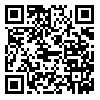Volume 18, Issue 3 (Autumn 2023)
Salmand: Iranian Journal of Ageing 2023, 18(3): 438-459 |
Back to browse issues page
Download citation:
BibTeX | RIS | EndNote | Medlars | ProCite | Reference Manager | RefWorks
Send citation to:



BibTeX | RIS | EndNote | Medlars | ProCite | Reference Manager | RefWorks
Send citation to:
Ayoubi-Mahani S, Eghbali-Babadi M, Farajzadegan Z, Keshvari M. Facilitators and Barriers to Active Aging in Iran: A Gualitative Study. Salmand: Iranian Journal of Ageing 2023; 18 (3) :438-459
URL: http://salmandj.uswr.ac.ir/article-1-2557-en.html
URL: http://salmandj.uswr.ac.ir/article-1-2557-en.html
1- Department of Community Health Nursing, School of Nursing and Midwifery, Isfahan University of Medical Sciences, Isfahan, Iran.
2- Department of Critical Care Nursing, Nursing and Midwifery Care Research Center, School of Nursing and Midwifery, Isfahan University of Medical Sciences, Isfahan, Iran. ,eghbali@nm.mui.ac.ir
3- Department of Community and Preventive Medicine, Faculty of Medicine, Isfahan University of Medical Sciences, Isfahan, Iran.
4- Department of Community Health Nursing, Nursing and Midwifery Care Research Center, School of Nursing and Midwifery, Isfahan University of Medical Sciences, Isfahan, Iran.
2- Department of Critical Care Nursing, Nursing and Midwifery Care Research Center, School of Nursing and Midwifery, Isfahan University of Medical Sciences, Isfahan, Iran. ,
3- Department of Community and Preventive Medicine, Faculty of Medicine, Isfahan University of Medical Sciences, Isfahan, Iran.
4- Department of Community Health Nursing, Nursing and Midwifery Care Research Center, School of Nursing and Midwifery, Isfahan University of Medical Sciences, Isfahan, Iran.
Abstract: (4264 Views)
Objectives Planning for active aging to manage the conditions of old age is one of the inevitable priorities that requires knowing its facilitators and barriers from the perspectives of beneficiaries. In this regard, this study aims to identify the facilitators and barriers to active aging in Iran from the perspective of older adults and geriatric experts.
Methods & Materials This is a qualitative study that was conducted in 2022 using the content analysis method. Participants were 20 older adults and 21 experts in geriatrics who were selected using a purposive sampling method based on the inclusion criteria. Semi-structured, in-depth interviews and focus groups were used for data collection. Data were analyzed using Graneheim and Lundman’s content analysis method. Lincoln and Guba’s criteria were used to determine the credibility, transferability, dependability, and confirmability of the data.
Results Four main categories were extracted for barriers to active aging (individual, family, structural, and health system-related) and four main categories for facilitators of active aging (older adults’ existential capacity, family capacity, community capacity, and health system capacity).
Conclusion Health system-related barrier is one of the barriers to planning for active aging in Iran. The results of this study provide valuable information to experts in geriatrics, scholars, and elderly care centers for developing interventions to promote active aging in Iran.
Methods & Materials This is a qualitative study that was conducted in 2022 using the content analysis method. Participants were 20 older adults and 21 experts in geriatrics who were selected using a purposive sampling method based on the inclusion criteria. Semi-structured, in-depth interviews and focus groups were used for data collection. Data were analyzed using Graneheim and Lundman’s content analysis method. Lincoln and Guba’s criteria were used to determine the credibility, transferability, dependability, and confirmability of the data.
Results Four main categories were extracted for barriers to active aging (individual, family, structural, and health system-related) and four main categories for facilitators of active aging (older adults’ existential capacity, family capacity, community capacity, and health system capacity).
Conclusion Health system-related barrier is one of the barriers to planning for active aging in Iran. The results of this study provide valuable information to experts in geriatrics, scholars, and elderly care centers for developing interventions to promote active aging in Iran.
Type of Study: Research |
Subject:
gerontology
Received: 2023/01/03 | Accepted: 2023/04/30 | Published: 2023/10/01
Received: 2023/01/03 | Accepted: 2023/04/30 | Published: 2023/10/01
Send email to the article author
| Rights and permissions | |
 |
This work is licensed under a Creative Commons Attribution-NonCommercial 4.0 International License. |








